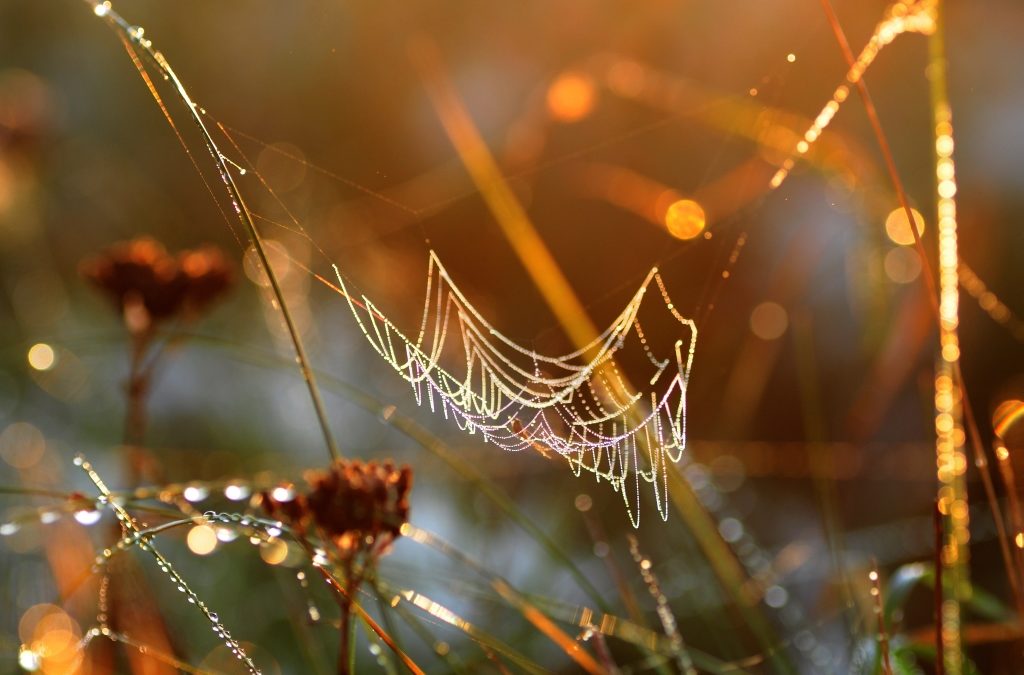
Autumn’s Spooky Species: How to Appreciate Misunderstood Wildlife this Season
These Halloween icons are in reality quite charming, and provide us with valuable services!
The crisp October air brings the excitement of changing leaves and a changing season. While making yards and gardens cozy for wildlife braving the winter is a common discussion this time of year, we are focusing on what kinds of important wildlife you may notice this month! With Halloween around the corner, now is the perfect time to better understand some of the spooky (or maybe not-so-spooky-after-all) animals that you may see in autumn!
Owls
Soon leaves will fall to the ground, making it easier to spot this inquisitive bird of prey. The barred owl in particular hoots in a pattern that sounds like they’re asking “Who cooks for you? Who cooks for you all?”. I think we all wish the answer to that question was “someone else”. While this call at night may sound spooky, barred owls have some endearing qualities. This species mates for life, and lets its young stay near home longer than other species – up to six months! You can look for barred owls in Ames in mature tree stands near a water source. To help all owls, try to stop putting out rodent poison; owls eat rodents, and can consequently become sick from the poison. Healthy owls in your area may mean natural rodent control for you! Additionally, some owls utilize nesting boxes; you can contact Wild Birds Unlimited here in Ames to learn more!
Bats
Could we truly celebrate Halloween properly this month without bats? From décor to Dracula, this fuzzy animal’s image will be seen everywhere this month. However, the animals themselves will be seen less and less. Bats remaining in Iowa during winter are now looking for cozy spots for hibernation, especially as the amount of insects declines this month. Bats are great at gobbling down mosquitos and other pesky insects (the bat pictured here can eat 600 insects in an hour!), and their babies are called “pups”! These animals are much more helpful and cute than they are spooky.
To help bats, consider building a bat box for fun! If a bat gets in your home, remember that they will not fly into you; they are expert navigators and will avoid you while they try to fly up and away. Calmly open a door or window for it to fly back outside and stand still at a distance until it leaves. If it can’t find the exit, call the Iowa Wildlife Center (515-233-1379) or other wildlife societies to have experts remove the bat in a humane way.
Spiders
Many people try their best to be open-minded towards insects, but most find spiders hard to appreciate (spiders are not technically “insects” – they’re “arachnids”). During late summer and early fall, you may see spiders more often, but don’t panic. They are not “coming in” to escape cool temperatures. Most spiders you see indoors are specifically adapted to survive indoors, where there is little food and water. Outdoor spiders are not well-adapted to live inside our homes, and are not trying to sneak in; their food is outside, and that’s where they’ll stay! If they accidentally wander in, they will not survive more than a few days, and won’t reproduce. What you are probably seeing are indoor spiders that have been inside this whole time, not bothering you at all.
But why are you seeing indoor spiders more often than usual? Because they are in love! This time of year is the mating season for many spiders, and instead of stealthy squatters, you’re seeing love-sick troubadours! Besides embarking on their quest to find love, spiders are also fantastic household helpers, eating any insects they may find along their way. I tend to leave spiders alone if they are along baseboards and in corners. If one particularly bothers me, I use a paper and cup to catch it and place it outside.
This time of year is beautiful in Iowa, and it’s the perfect time to find ways to appreciate the beauty of living things that continue to serve our needs, despite our fear of them. Happy Fall!
Household Tip: To truly understand any animal/insect you see in or around your house, look up information from science-based sources, such as university extension websites, rather than pest-control companies. Pest-control websites are likely to present alarming information, possibly to encourage use of their services. A majority of the time, whatever you are seeing is not only common, but harmless as well.
Links in Text:
Leave The Leaves! Xerces Society blogpost, by Justin Wheeler:
https://xerces.org/blog/leave-the-leaves
Wild Birds Unlimited, Ames (515-956-3145) Website:
https://ames.wbu.com/?utm_source=google&utm_medium=local&utm_campaign=localmaps&utm_content=279
Woodworking for Wildlife, Iowa State University, link to PDF file on how to build a bat box:
https://naturalresources.extension.iastate.edu/wildlife/woodworking-wildlife



